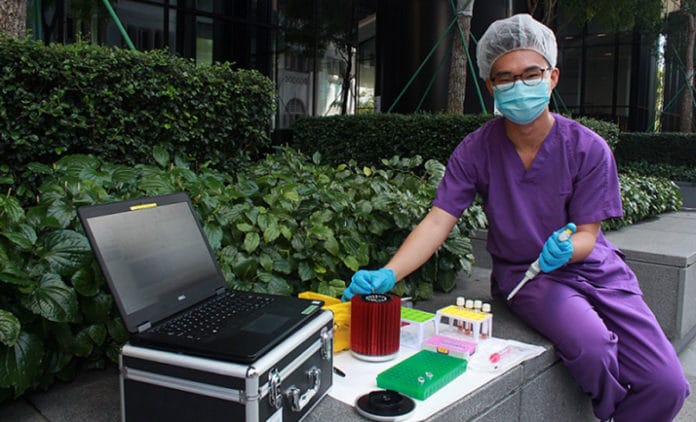Currently, the most sensitive strategy for testing for COVID-19 is through a laboratory technique called polymerase chain response (PCR), in which a machine enhances viral genetic material by copying it over and over, so any hint of the SARS-CoV-2 virus can be detected.
A significant bottleneck in sample testing is RNA purification – separating RNA from other components in the patient sample – a difficult process that requires chemicals that are now in short supply worldwide.
Now, scientists at the Nanyang Technological University, Singapore’s (NTU Singapore) Lee Kong Chian School of Medicine (LKCMedicine) have developed a new way to improve the speed of COVID-19 laboratory test. Now only speed, but it also enhances the handling time and cost of the testing method.
Fascinatingly, the improved testing method yields results in 36 minutes.
Mr. Wee Soon Keong, a Ph.D. candidate at NTU LKCMedicine and the first author of the paper, said: “While polymerase chain reaction (PCR) is a venerable technology that has proven to be a workhorse for biological research, it has some drawbacks when used outside of the laboratory environment. The process is fiddly and time-consuming. Our rapid COVID-19 test involves a single-tube reaction that reduces hands-on time and biosafety risk for lab personnel, as well as the likelihood for carryover contamination during the processing of samples.”
Besides testing for COVID-19, the method can also be used to detect other viruses and bacteria, including the dengue virus.
The method uses the ‘direct PCR’ method, removing the need for RNA purification, a time-consuming and costly step. Instead, they added inhibitor-resistant enzymes and reagents targeting compounds that obstruct RNA amplification, such as mucin, a central component of mucus. These enzymes and reagents, which are commercially available, have high resistance to such compounds that otherwise inhibit PCR, rendering the test inaccurate.
The biochemical mix of crude sample and inhibitor-resistant enzymes and reagents is placed into a single tube, which is inserted into a laboratory thermocycler, a machine used to amplify genetic material in PCR. After 36 minutes, results reveal whether there is any trace of COVID-19 with confidence.
Dr. Sivalingam Paramalingam Suppiah said, “By skipping the RNA extraction step with our direct-PCR method, we see cost savings on nucleic acid extraction kits, and avoid the problem of reagents in short supply when lab testing is ramped up and the demand increases globally.”
Leader of the research team, Associate Professor Eric Yap, said, “We are now trying to deploy such direct-PCR methods, developed by ourselves and others, for routine diagnostics. We need to determine the actual utility and benefits in a real-world setting and to understand if there are any trade-offs. When one bottleneck is removed, other challenges may emerge – like ensuring quality control, or reducing manual errors.”
“Our goal is to develop ultrafast and automated tests that yield results in minutes, and healthcare workers can perform that in the clinic with similar accuracy and sensitivity as in specialized laboratories. This will allow us to take PCR testing out of conventional laboratories nearer to the point-of-care, and into the low-resource settings that need them the most.”
Journal Reference:
- Soon Keong Wee et al. Rapid Direct Nucleic Acid Amplification Test Without RNA Extraction for SARS-CoV-2 Using a Portable. DOI: 10.3390/genes11060664
